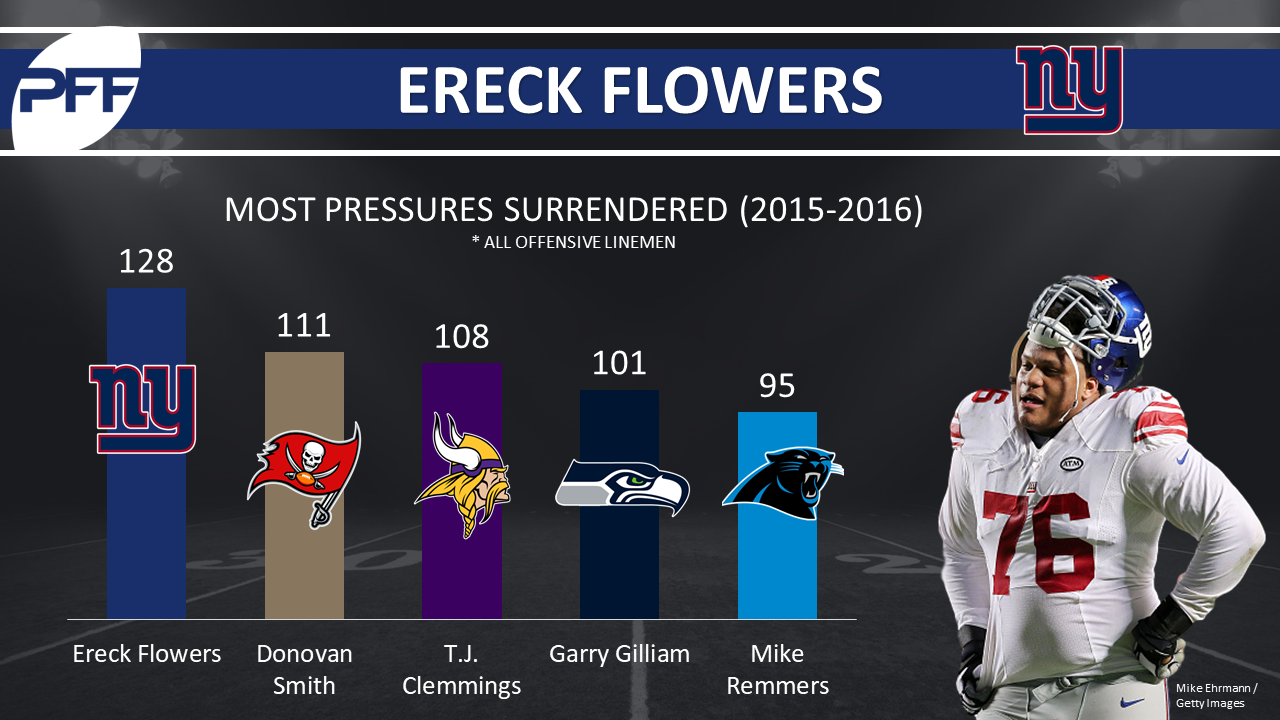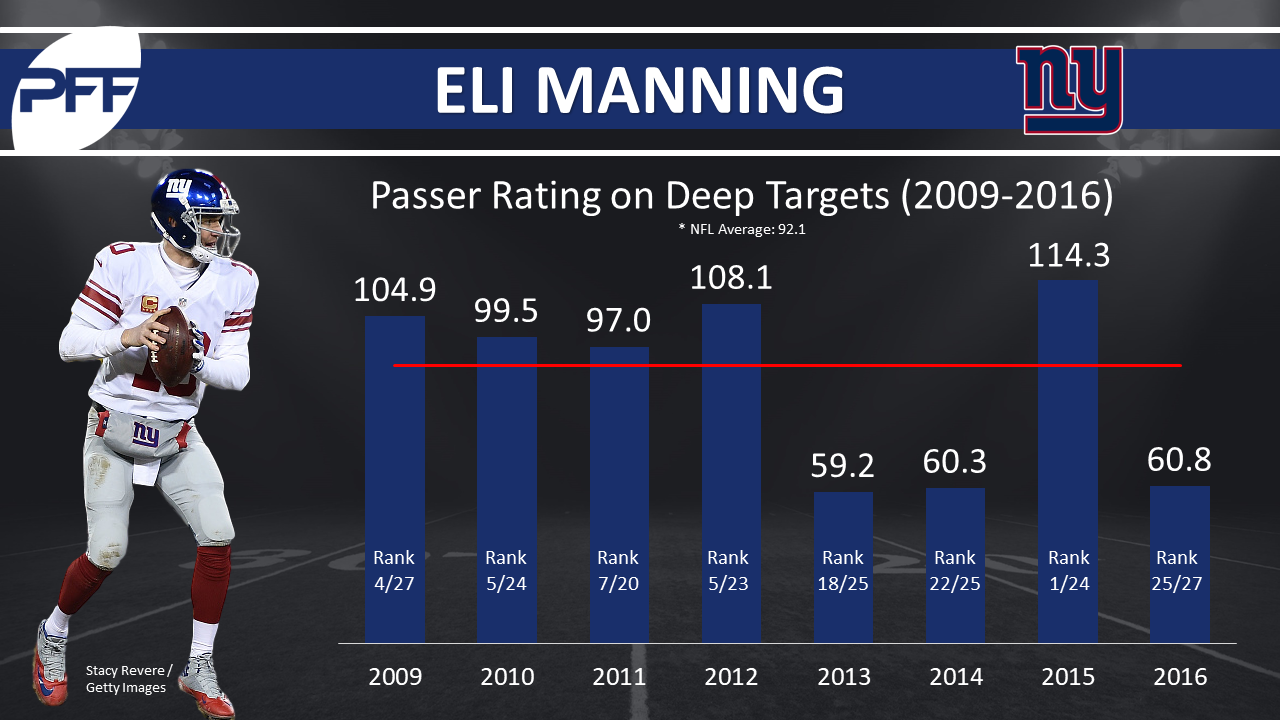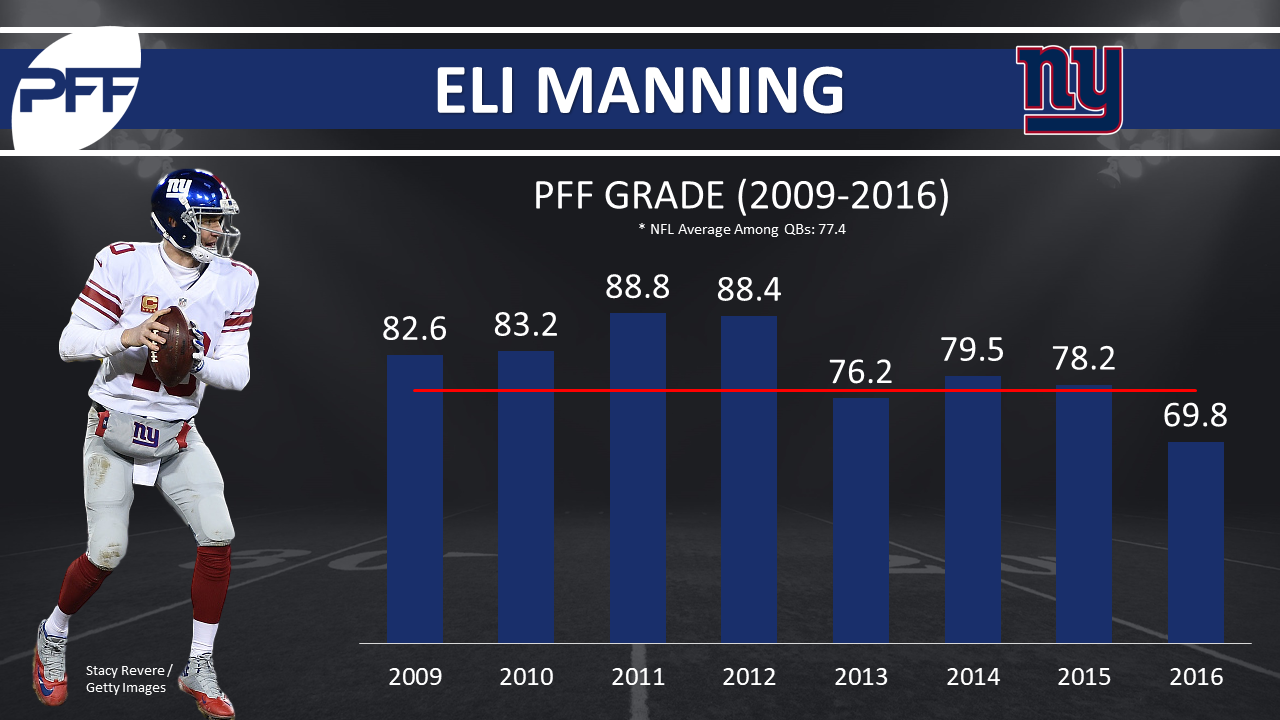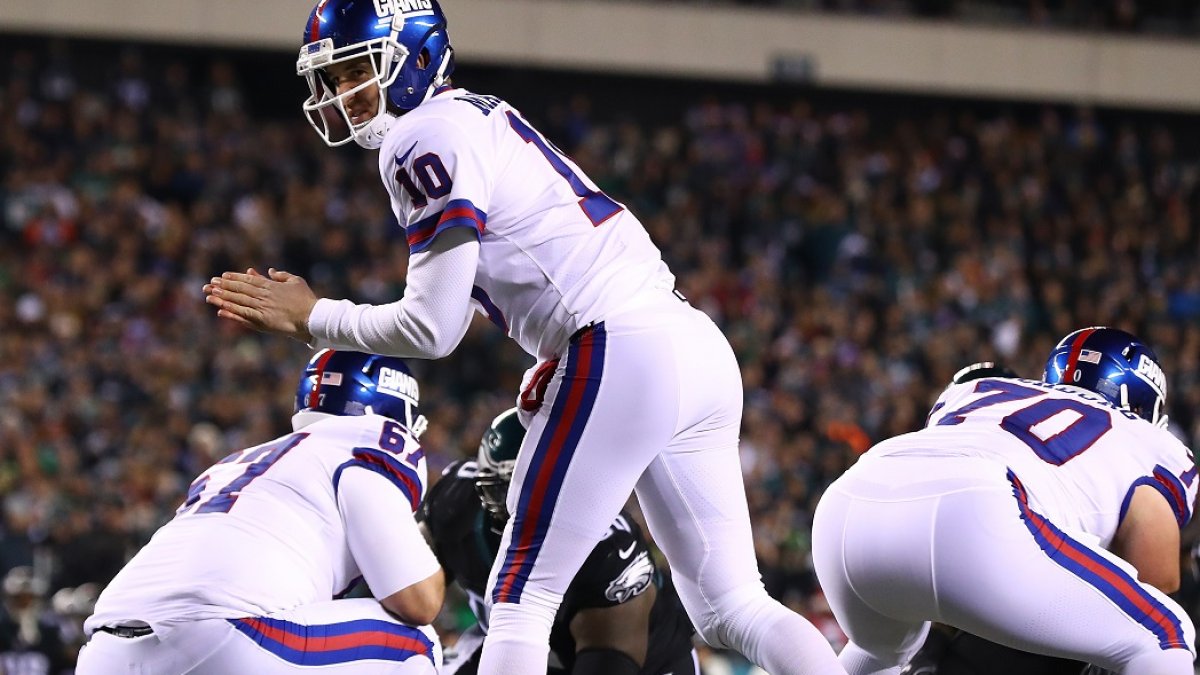(“Metrics that Matter” is a short feature that appears every Tuesday, Wednesday, and Saturday, highlighting a notable fantasy lesson to be learned from PFF’s advanced stats.)
The New York Giants were tied for the fifth-best winning percentage last season, after ranking 22nd in 2015. After spending big in free agency last offseason, we saw a complete 180 from the Giants on both sides of the ball.
Last season, on defense, the Giants ranked second-best in opposing passer rating, fourth-best in opposing yards per carry, and second-best in points against per game. This was a significant improvement upon their 2015 rankings of 22nd, 26th, and 30th, respectively.
Though we saw a marked improvement for the Giants on defense, they regressed considerably on offense. Last season, the Giants went from eighth-best to fifth-worst in yards per drive, and sixth-best to seventh-worst in points scored per game. The Giants running back corps fell from 17th in yards per carry average to 28th last season. As a passer, QB Eli Manning posted his second-worst passer rating, worst yards-per-attempt average, and worst PFF grade of his past eight seasons.
What happened?
There are plenty on excuses we can make for the Giants on offense. If an offensive line is really “only as good as its worst offensive lineman,” then the Giants are in a bit of trouble. Over the past two seasons, no offensive lineman has surrendered more pressures than left tackle Ereck Flowers.

Still, Flowers was close to equally abysmal in each of his past two seasons (69 pressures surrendered in 2015, 59 in 2016). I’m hesitant to completely blame the offensive line for New York’s offensive woes last season. In terms of run-blocking, the Giants improved in yards before contact per attempt, from 22nd-best in 2015 to 17th-best last season. In terms of pass-blocking, Manning was actually pressured less frequently last season (29.5 percent of his dropbacks) than in 2015 (34.3 percent of his dropbacks), but was also less efficient when pressured. His passer rating under pressure dropped from 78.3 in 2015 to 63.3 last season.
If it wasn’t on the offensive line, maybe it was due to Manning’s lack of support elsewhere. We already know the running game declined, and that surely had an impact, but what about his pass-catchers? Well, we know the issue wasn't with Odell Beckham Jr. Manning averaged a 105.3 passer rating when targeting Beckham, as opposed to 78.9 when targeting all other receivers.
Outside of Beckham, Manning didn’t have much else to work with. His tertiary targets were rookie Sterling Shepard (who ranked 16th-worst in yards per route run), our 18th-worst-graded wide receiver (of 119 qualifying) in Victor Cruz, and our worst-graded tight end (of 65 qualifying) in Will Tye. However, Manning’s pass-catchers in 2015 weren’t much better. Dwayne Harris and Rueben Randle were two of our 25 worst-graded wide receivers in 2015 (among 119 qualifying). Both Larry Donnell and Tye graded out poorly as receivers as well.
Manning’s offensive weaponry appears far superior heading into 2017 following the additions of Brandon Marshall and Evan Engram. This might inspire some optimism for Manning’s fantasy potential, but this doesn’t tell us what went wrong last season. After spending the better portion of a day digging into the numbers, I was confident that this was the most likely culprit:
In 2015, Manning led the league in deep passer rating (passer rating on balls travelling 20 or more yards through the air). In 2016, Manning ranked third-worst, ahead of only Brock Osweiler and Blake Bortles.
Manning struggled targeting his receivers deep, after leading the league in the prior season. This leads us to two questions: 1) Was 2015 the outlier for Manning, or was it his 2016 season? 2) Why did his play fall off?

Which season was the outlier? Well, I’m not too sure. On a four-year sample, Manning appears well below average on deep passes (75.9, 23rd of 30 qualifying). Over the prior four seasons, he posted a deep passer rating of 102.7, which ranked fourth-best of 28 qualifying. I’m more inclined to buy into our more recent data sample.
The data suggests there wasn’t a dramatic shift in how teams schemed against Manning last season. It is true Manning hasn’t had a dependable receiving corps over this four-year stretch, and his passer rating when targeting his one dependable receiver (Beckham) was inspiring, but his overall play has deteriorated as well, which is backed up by our grades.

Manning ranked top-10 in PFF grade in each of these first four seasons. Last season, he ranked sixth-worst.
Without much else to go on, I’m guessing Manning’s efficiency on deep passes played a significant role in the Giants’ offensive splits over the past two seasons, but the above chart raises bigger concerns. I worry Manning, at age 36, is in the twilight of his career. On a fantasy-points-per-game basis, Manning hasn’t finished inside the top-12 at his position since 2011. This four-year trend of average to below-average performance is enough for me to avoid him at current ADP (QB18) in fantasy leagues.
I suspect the Giants selected tight end Evan Engram in the first round in part to help Manning on deep passes. Engram’s 40-yard dash time of 4.42 was the third-best by a tight end at the combine since 2000. Engram also led all tight ends in receptions on deep passes last season. From a real NFL perspective, perhaps this will help lift the offense back closer to 2015 heights, but Manning’s decline in play overall should still be a concern.




 © 2025 PFF - all rights reserved.
© 2025 PFF - all rights reserved.